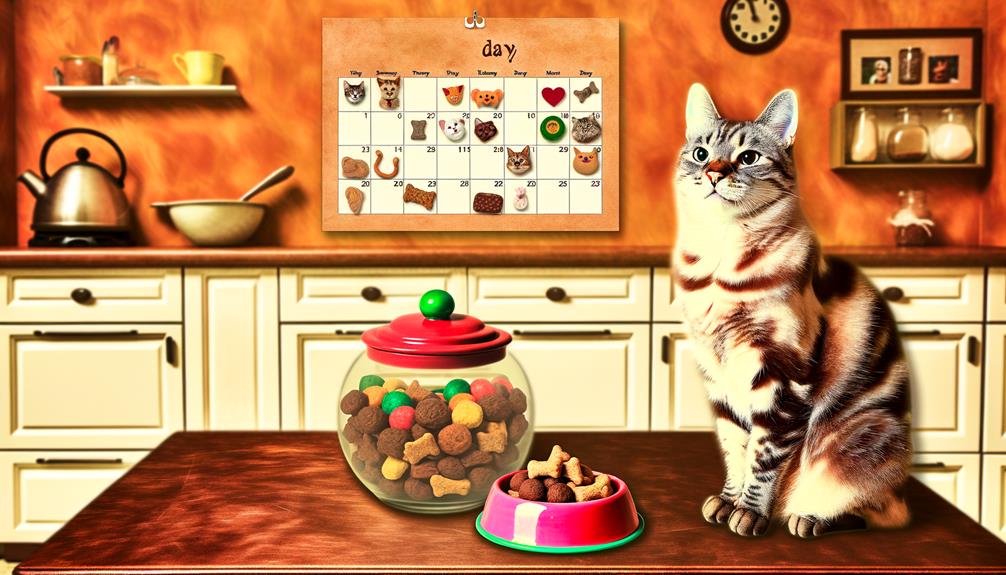When figuring out how many treats to give your cat each day, it's essential to keep in mind that treats should only make up a small portion of their diet. You don't want to unknowingly contribute to obesity or other health issues. The number of treats can vary depending on your cat's weight, activity level, and the type of treats you're offering. It's always best to check with your vet for tailored advice. But have you ever wondered how to balance the joy of giving treats with maintaining your cat's health? Let's explore this further.
Importance of Treats
In relation to enhancing the bond between you and your cat, treats play an important role by providing positive reinforcement and shared moments of enjoyment. Treats aren't just about indulgence; they serve as effective tools for rewarding positive behavior and encouraging learning. By giving your cat treats during training sessions, you're reinforcing desired actions and creating a fun, engaging environment that can greatly improve your cat's behavior and skills.
When it comes to choosing treats, it's vital to opt for healthy and tasty options. Cats can be quite particular about their food, so a variety of treats can help engage even the pickiest eaters, making mealtime more enticing. However, moderation is key. While it's tempting to shower your feline friend with treats, excessive amounts can lead to obesity and spoil their appetite for regular meals. To maintain a balanced nutrition, treats should complement their diet and constitute no more than 10% of their daily calorie intake.
It's important to give your cat treats in a way that supports their overall health. This means considering the nutritional content and portion size of each treat. By doing so, you guarantee that your cat not only enjoys the treats but also maintains a healthy weight and well-being. Remember, treats are a supplement to their regular diet, not a replacement.
Health Considerations
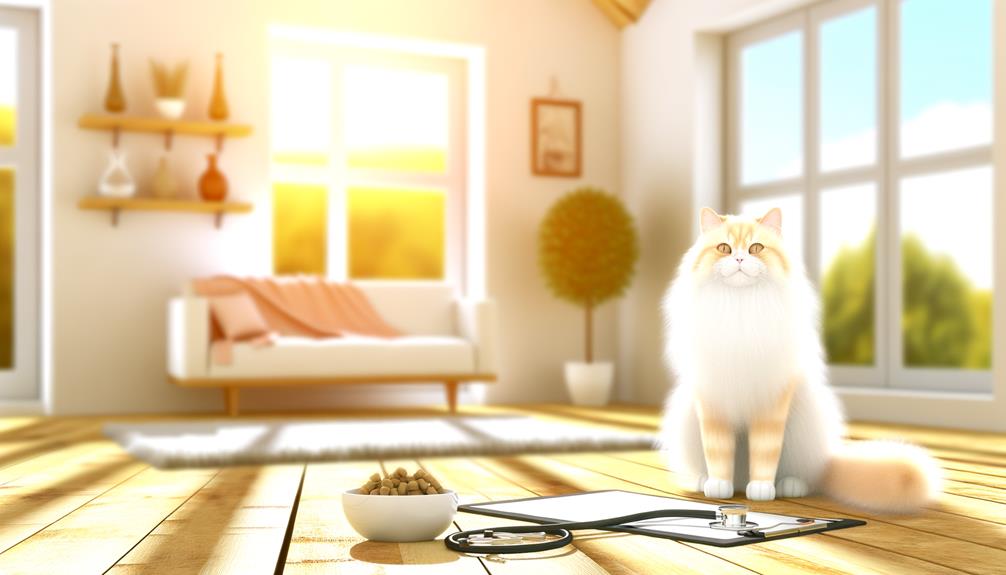
How often do you think about the health implications of giving your cat treats? It's easy to overlook, but being mindful of your cat's treat consumption is vital. Treats should not exceed 10% of your cat's daily caloric intake to prevent obesity and guarantee a balanced diet. Overindulgence can lead to serious health issues, including obesity, diabetes, and joint problems.
To maintain your cat's health, you need to monitor their caloric intake, including treats. Here's a breakdown to help you:
| Daily Calories | 10% Treats | Calories per Treat |
|---|---|---|
| 200 kcal | 20 kcal | 2-5 kcal |
| 250 kcal | 25 kcal | 2-5 kcal |
| 300 kcal | 30 kcal | 2-5 kcal |
For example, if your cat's daily caloric intake is 250 kcal, treats should not exceed 25 kcal per day. Understanding the calories per treat helps you provide your cat with the right amount without compromising their health.
Furthermore, certain ingredients in treats may cause allergies or intolerances. It's important to observe your cat's reactions to new treats and avoid any that trigger adverse effects. Regular veterinary check-ups are also recommended to address any health concerns related to treat consumption and to monitor your cat's weight effectively.
Types of Treats
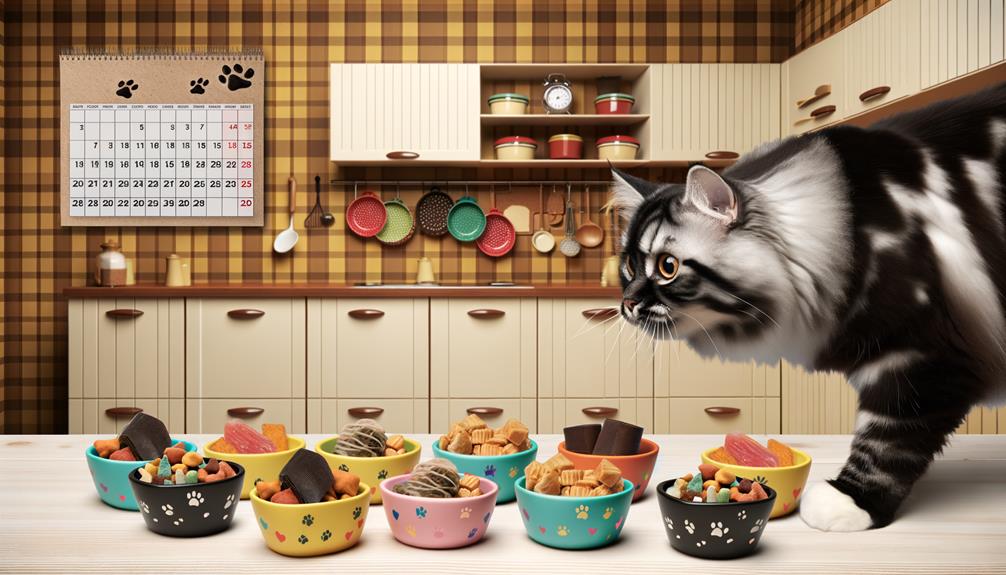
Variety abounds when it comes to cat treats, each with its unique benefits and drawbacks. Dry treats often contain higher calories and preservatives, making them a less ideal option for frequent use. If you're giving your cat treats every day, it's important to be mindful of the number of calories to prevent weight gain and related health issues.
Soft treats are usually easier for older cats to chew, providing a more palatable choice for those with dental issues. These treats can be a lifesaver for cats with sensitive teeth, guaranteeing they still get to enjoy a tasty reward. However, it's necessary to choose options that are complete and balanced to avoid nutritional deficiencies.
Freeze-dried options are a great way to offer a natural protein source that is low in calories and highly appealing to cats. These treats often come from single-ingredient sources like chicken or fish, making them a healthy alternative. They're excellent for maintaining a cat's lean muscle mass and overall vitality.
Homemade treats allow you to control ingredients and avoid fillers, guaranteeing a healthier snack for your pets. By making treats at home, you can confirm they are free from artificial additives and tailored to your cat's dietary needs. This can be particularly beneficial if your cat has specific health concerns or allergies.
Lastly, dental treats can promote oral health and reduce plaque buildup, making them a beneficial addition to a cat's treat variety. These treats help keep your cat's teeth clean and gums healthy, contributing to their overall well-being.
Recommended Serving Sizes
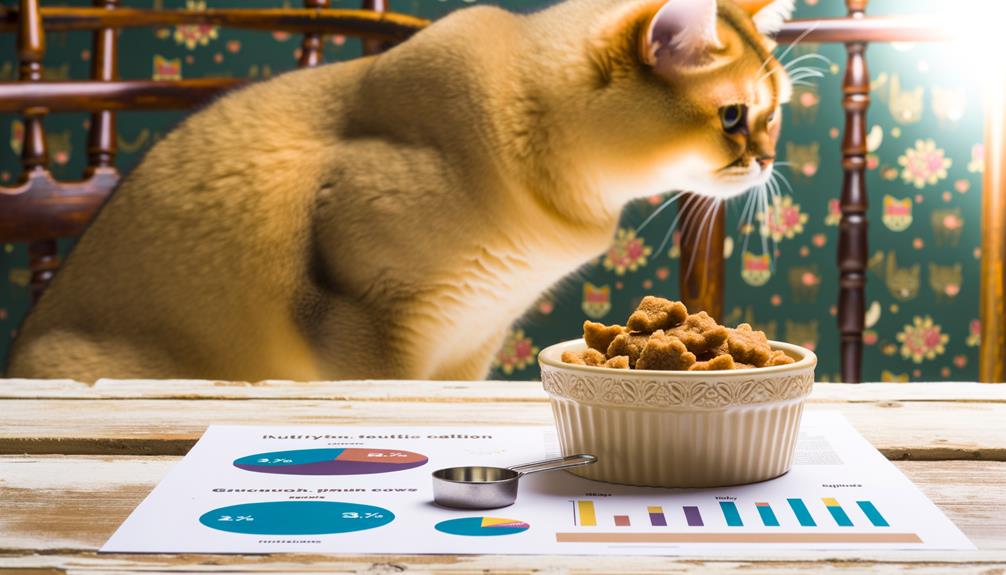
An essential aspect of managing your cat's diet is adhering to recommended serving sizes for treats. Treats should not exceed 10% of your cat's daily caloric intake to guarantee a balanced diet. For instance, if your cat requires 200 calories per day, roughly 20 calories, or 10%, can come from treats. This guideline helps prevent excessive calorie consumption, making sure that your cat maintains a healthy appetite for its main meals.
High-quality treat packets often include feeding guides that offer specific recommendations based on the caloric content of the treats. These guides are useful tools for determining the appropriate serving sizes for adult cats. It's vital to read and follow these feeding guides to avoid overfeeding. For example, if a particular treat contains 5 calories per piece, you can give your cat up to four pieces to stay within the recommended limit.
Adjustments might be necessary based on your cat's weight, activity level, and overall health. Active cats or those with a higher metabolic rate may require slightly more calories, while less active or overweight cats might need fewer. Always consider the amount of main food your cat consumes daily and make sure that treats do not disrupt this balance.
Consulting with a veterinarian can provide personalized recommendations tailored to your cat's specific needs. They can help you determine the most appropriate serving sizes and make sure that treats complement your cat's overall nutrition plan without compromising their health. By adhering to these guidelines, you can offer your cat treats responsibly and keep them healthy and happy.
Treat Safety Tips
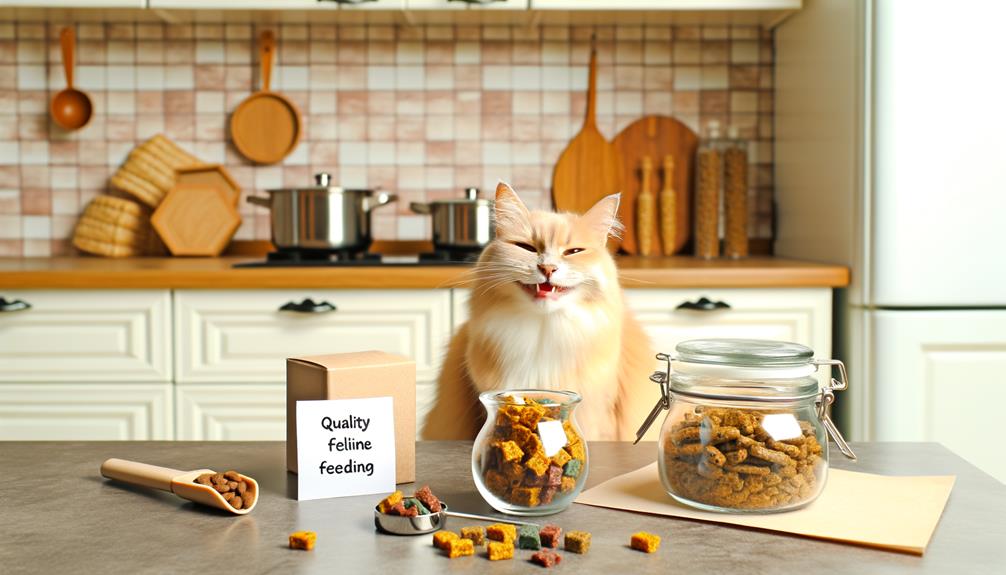
When introducing treats into your cat's diet, it's important to prioritize safety to guarantee their well-being. Start by offering new treats in small amounts to monitor for any adverse reactions. Watch for signs like stomach upset, diarrhea, or changes in stool, as these can indicate that the treat isn't agreeing with your cat's digestive system.
It's vital to be vigilant about allergies. Symptoms such as sneezing, coughing, or skin rashes can be indicators of an allergic reaction. If you observe any of these, discontinue the treat immediately and consult your veterinarian. They can provide guidance on whether the treat is safe to reintroduce or if an alternative should be sought.
Hydration is another key factor to bear in mind. Always provide fresh water alongside treats to make sure your cat stays hydrated. Dehydration can exacerbate digestive issues, so having water readily available helps mitigate any potential problems.
Remember, treats should be viewed as supplementary rewards rather than a primary food source. They don't provide complete nutrition and should not replace balanced meals. Over-reliance on treats can lead to nutritional deficiencies and other health concerns.
Regular veterinary check-ups are indispensable. They help address any treat-related health issues and allow for adjustments in your cat's diet as needed. Your veterinarian can offer personalized advice tailored to your cat's specific health needs, making certain that treats remain a safe and enjoyable part of their routine.
